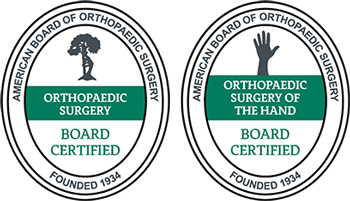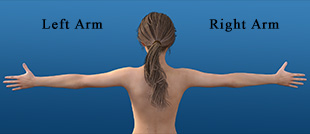How to Prevent Olecranon Bursitis
Most of us aren’t conscious of our elbow use for daily activities. However, the elbow is a joint that gets a lot of use and can become damaged. If you’re experiencing elbow pain, olecranon bursitis is a diagnosis that a physician, such as Dr. Knight at The Hand and Wrist Institute in Dallas, Texas, should investigate.
Contents
What Is Olecranon Bursitis?

Olecranon bursitis, or elbow bursitis, refers to the inflammation of the bursa in the elbow. A bursa is a small pouch of fluid within a joint. There are dozens of these throughout your body, and the plural term for them is bursae. These act as cushions to protect the joints. However, if they become inflamed, they can cause symptoms such as discomfort, pain, and stiffness.
What Causes Olecranon Bursitis?
There are a few different ways that olecranon bursitis can develop. Generally, the inflammation is the result of repeated use. For this reason, people with certain occupations or hobbies are at a higher risk for developing bursitis. For example, people who play tennis on a frequent basis are more likely to develop elbow bursitis because of the way they hold the racket and the impact that carries to the elbow.
Not all activities that put you at risk for elbow bursitis are high impact though. Jobs that cause you to lean on your elbows frequently may also put you at an increased risk for developing bursitis. Some examples of professions that may utilize their elbows often are any that work primarily at a desk, plumbers, and certain athletes.
Repetitive activities, putting pressure on the elbow, or elbow injures can all potentially lead to an inflamed bursa. Infection can also cause olecranon bursitis, although it’s less common.
What Can You Do To Prevent Olecranon Bursitis?
As with most conditions, it’s better to prevent bursitis than to try to treat it later. The best way to prevent bursitis is to avoid repetitive stress on your elbow. If you enjoy and partake in a hobby that’s causing repetitive stress to your elbow, you may want to schedule periods of rest from it.
For example, if you play tennis, you may notice that when you play every day for a week, your elbow is sore and inflamed. In this case you may want to consider creating a schedule that allows recovery time for your joint between sessions by taking one or two days off throughout the week.
It may be more complicated to avoid repetitive joint stress if it’s due to your occupation. However, there are still several options available to you to reduce your chance of developing olecranon bursitis. Increasing your awareness of the amount of stress that you’re putting on your elbow is a necessary starting point in reducing it.
There will still be times when leaning on your elbow is unavoidable, but you can try to reduce the frequency by modifying positions often.
What Tools Are Available for Prevention?
There are a variety of tools that are readily available to help you achieve your goal of avoiding elbow bursitis. These include the following:
Pharmaceutical Interventions
Many people find that utilizing over-the-counter non-steroidal anti-inflammatory drugs (NSAIDs) will reduce their inflamed bursae. Reducing the inflammation at the site should decrease any discomfort you’re experiencing as well. Allowing the site to stay inflamed on a regular basis will likely lead to an increased risk of needing further intervention. Meanwhile, addressing that inflammation with NSAIDs will help prevent further weakening of the site that results from long-term inflammation.
In addition to oral NSAIDs, there’s an entire market of topicals. These are ointments that contain medications and other things formulated to reduce inflammation. They’re designed to be applied directly to the site and act quickly. Since these treatments contain medication, it’s best to discuss them with your physician if you plan to use them on a regular basis.
Non-Pharmaceutical Prevention
In line with the thought process of decreasing inflammation to reduce bursae damage, you can often reduce swelling without medications. You can achieve this through application of ice over a period of time. You’ll need to apply the ice while resting, as it won’t be effective if you continue applying pressure to the elbow. Ice treatments should be done in relatively short intervals. This is because the cold will reduce circulation, which reduces the swelling, but could lead to stiffness if extended too long.
Another resource that many people find useful is elbow pads or sleeves. These may be especially helpful if you have an occupation in which repetitive or constant elbow stress is unavoidable. They provide support to the joint and cushion it from experiencing too much direct pressure constantly. A physician can provide these elbow pads, but there are also many low-cost options available online and in stores. If you find yourself needing one, it’s good to have a conversation with your physician about everything you should consider when choosing and wearing them.
What Is the Treatment If Prevention Isn’t Successful?
If at home prevention techniques aren’t successful and you’re still experiencing discomfort and continuous inflammation, a physician can intervene in a variety of ways. The first steps would be to aid you in your prevention attempts. The physician can accomplish this through steroid injections at the site or draining the bursa through an aspiration technique. If the bursitis is the result of an infection, the starting point will be antibiotics. The physician may refer you to a physical therapist or recommend exercises you can do to relieve the bursa.
If none of these less invasive options are successful in providing you with relief, you may need surgical intervention. This procedure is typically performed on an outpatient basis and is relatively quick. It involves making the smallest incision possible, removing the chronically inflamed bursa, and suturing the site back closed.
Anytime that surgery is a possible treatment, people often become concerned. There’s a lot of anxiety surrounding the operating room due to people not being given adequate information about what to expect. Our team at the Hand and Wrist Institute in Dallas, Texas, will take the time to discuss all your treatment options and answer any questions you might have. Give us a call today at the Hand and Wrist Institute so that we can help reduce your anxiety.
Best Elbow Compression Sleeves by samuelemunemu32 is licensed with Public Domain Mark 1.0

























